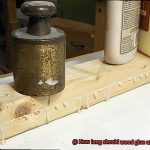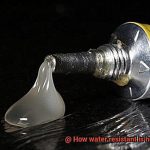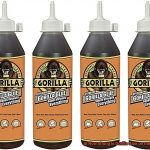Are you a fashion enthusiast who loves to add a personal touch to your clothes with patches or create unique designs with fabrics and embellishments?
If yes, then you know how crucial it is to have the right fabric glue for your projects. Tacky Glue is a popular adhesive choice for fabric because of its versatility, durability, and user-friendliness.
But with so many types of tacky glue available in the market, it can be challenging to figure out how long Tacky Glue takes to dry on fabric. Have you ever experienced that moment of uncertainty when you wonder if your fabric glue has fully dried before wearing that shirt or sending your handmade product to a client?
Fret not because in this post, we’ll dive into everything you need to know about the drying time of Tacky Glue on fabric. We’ll discuss the various factors that can affect how quickly Tacky Glue dries, such as humidity, temperature, and the type of fabric used.
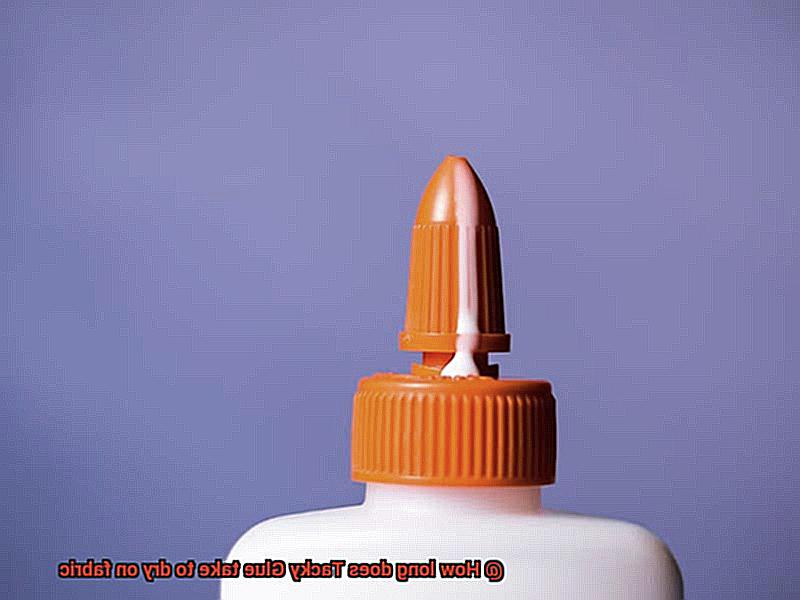
So keep reading and discover all there is to know about how long Tacky Glue takes to dry on fabric and how you can ensure successful projects every time.
Factors That Affect Drying Time
Contents
- 1 Factors That Affect Drying Time
- 2 Applying Tacky Glue to Fabric
- 3 The General Drying Time for Tacky Glue on Fabric
- 4 Thick Applications of Tacky Glue Take Longer to Dry
- 5 Tips for Applying Tacky Glue to Fabric
- 6 Avoid Over-Saturating the Fabric with Tacky Glue
- 7 Letting the Glue Fully Dry Before Handling or Washing the Fabric
- 8 Conclusion
When it comes to using Tacky Glue on fabric, the drying time can make or break your project. There are several factors to consider that can impact the drying time of tacky glue on fabric.
Firstly, the type of fabric you are working with can have an impact on the drying time. Fabrics that are more absorbent will cause the glue to dry faster, while less absorbent fabrics can slow down the process.
Humidity levels are another key factor to consider. High humidity levels can delay the drying process, while low humidity levels can speed it up. Therefore, it’s crucial to take note of the humidity levels before starting your project.
Temperature also plays a significant role in the drying time of tacky glue on fabric. If the temperature is too cold, the glue may take longer to dry or not dry at all. On the other hand, if it’s too hot, the glue may dry too quickly and make it difficult to work with.
Using too much or too little glue on fabric can also impact its drying time. Too much glue will take longer to dry and may not adhere properly, while too little glue may not provide enough adhesion and cause the material to fall apart.
Lastly, different brands and types of tacky glue have varying drying times, so it’s essential to read the manufacturer’s instructions carefully before applying it to fabric.
To ensure that your tacky glue adheres properly and dries within a reasonable amount of time, use a thin layer of glue and avoid over-saturating the fabric. Allow ample time for the glue to dry completely before handling or washing the fabric. A good rule of thumb is to let it dry overnight.
Applying Tacky Glue to Fabric
Let’s dive into the world of Tacky Glue and its exceptional ability to hold fabric together. Whether you’re adding a fun patch to your backpack or attaching sequins to a shirt, Tacky Glue is the perfect adhesive for your project.
But before you start applying Tacky Glue to your fabric, there are some essential things to keep in mind. First and foremost, make sure your fabric is clean and free from any dirt or debris. Any residue on the fabric may prevent the glue from adhering correctly, which could cause your project to come apart later on.
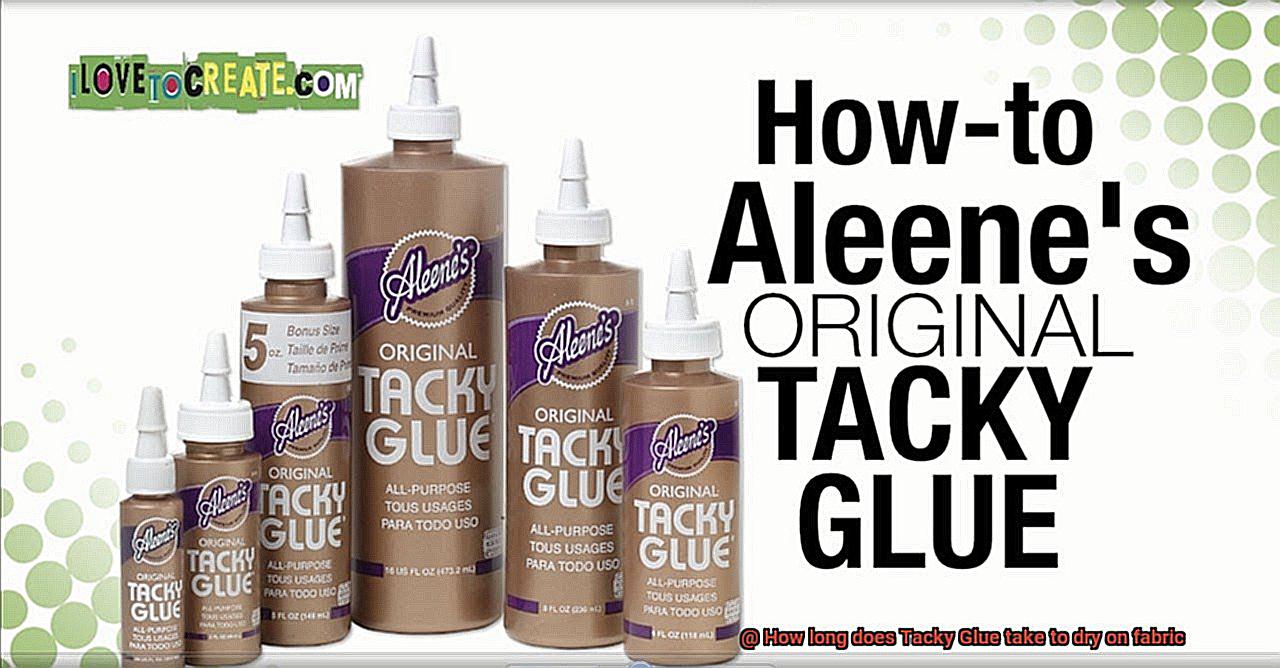
Once your fabric is good to go, it’s time to get gluing. Start by squeezing a small amount of Tacky Glue onto the area where you want to attach your decoration or embellishment. Remember, less is more when it comes to glue. You don’t want to overdo it and end up with a sticky mess.
Next, carefully place your decoration or embellishment onto the glue, making sure it’s centered and aligned correctly. This is where perfectionism comes in handy. If you need to adjust the placement of your decoration, do so quickly before the glue dries.
Now comes the hard part – waiting for the glue to dry completely before handling your project. This can take up to 24 hours depending on factors like humidity levels and temperature. But fear not. You can speed up the process by using a hair dryer set on low heat. Just make sure to hold it at least 6 inches away from the glued area and move it around continuously until it’s dry.
The General Drying Time for Tacky Glue on Fabric
As an expert in the field, let me share with you some tips and tricks to ensure your project is a success.
Firstly, let’s talk about tacky glue. This versatile adhesive is a go-to for attaching decorative elements to fabric, such as rhinestones and appliques. However, the drying time can be influenced by several factors.
The general drying time for tacky glue on fabric can take anywhere from 30 minutes to 24 hours, depending on the type of fabric used, the amount of glue applied, and the humidity level in the environment. It’s best to wait at least 24 hours before washing or wearing the fabric to ensure that the glue has fully cured.
If you’re short on time, there are ways to speed up the drying process. For instance, using a hair dryer set on low heat or placing the fabric in a warm, well-ventilated area can help. But watch out for high heat or direct sunlight as this can damage the fabric and cause the glue to shrink or crack.
It’s crucial to follow the manufacturer’s instructions for proper application and drying time. Over-applying tacky glue can cause it to take longer to dry and may result in a sticky residue that’s hard to remove. As a precaution, test the adhesive on a small inconspicuous area of the fabric before applying it to the entire surface.
In summary, the drying time for tacky glue on fabric varies, but by following these guidelines, you’ll achieve fantastic results. Remember – patience is key when using tacky glue. So go ahead and unleash your creativity with confidence.
Thick Applications of Tacky Glue Take Longer to Dry
As an expert on Tacky Glue, I’m here to share some valuable information about why thick applications of Tacky Glue take longer to dry on fabric.
Firstly, let’s emphasize the significance of applying Tacky Glue in thin layers. When working with fabric, it’s vital to avoid applying thick layers of glue. Thick applications of Tacky Glue take much longer to dry than thin layers. The thicker the layer of glue, the longer it takes to dry thoroughly. So, remember to apply Tacky Glue in thin layers for optimal results.
Now, let’s delve into the two primary reasons why thick applications of Tacky Glue take longer to dry on fabric. Firstly, glue needs to dry from the outside in. When a thick layer of glue is applied, the outer layer dries first, creating a barrier that slows down the drying process for the inner layers. This means that even if the surface of the glue appears dry, there may still be wet spots underneath.
Secondly, thicker applications contain more moisture. As Tacky Glue dries, moisture needs to evaporate. More glue means more moisture, which takes longer to evaporate. Additionally, thicker layers of glue may trap moisture inside, making it harder for the glue to dry completely.
Therefore, it’s crucial to allow plenty of time for Tacky Glue to dry and cure before handling or washing your fabric. Thin layers of Tacky Glue typically dry relatively quickly but can still take up to 24 hours to fully cure. So be patient and avoid handling or washing your fabric until the glue has completely dried and cured.
To summarize, here are some key takeaways:
- Apply Tacky Glue in thin layers.
- Thick applications of Tacky Glue take longer to dry because they need to dry from the outside in and contain more moisture.
- Allow plenty of time for Tacky Glue to dry and cure before handling or washing your fabric.
Tips for Applying Tacky Glue to Fabric
If you’re looking to use tacky glue to attach fabric for your crafting project, you’ll want to take a few key tips into account to ensure the best results possible. Here are five sub-sections to consider:
Choose the Right Tacky Glue
First things first: make sure you select a tacky glue formulation that is designed specifically for use with fabric. There are different types of tacky glue available, and using one that’s not intended for fabric may result in a weaker bond.
Pre-Wash and Dry Your Fabric
Before applying the glue, it’s important to pre-wash and dry your fabric to remove any sizing or other chemicals that could interfere with the adhesive’s ability to bond with the fibers. This step ensures that the glue will adhere strongly to the fabric.
Apply Tacky Glue Sparingly and Evenly
When applying tacky glue to fabric, it’s essential to use a small amount and spread it evenly over the surface. Applying too much glue can cause the fabric to become stiff and difficult to work with, while spreading it too thin may lead to weak adhesion. Using a brush or sponge applicator can help you apply the glue more evenly.
Allow Ample Drying Time
Once you’ve applied the glue, be sure to allow ample time for it to dry completely before moving on to the next step of your project. The drying time will depend on various factors such as humidity level, temperature, and thickness of glue application. Don’t rush this step – allowing sufficient drying time is key for achieving a strong and long-lasting bond.
Work Quickly and Carefully
The glue can begin to dry fairly quickly, so it’s important to work fast if you need to adjust the placement of the fabric or smooth out any wrinkles or bubbles. However, be careful not to rush through this step too quickly – taking your time and working carefully will help ensure the best results.
Avoid Over-Saturating the Fabric with Tacky Glue
I am an expert in this area and have some tips to help you achieve a strong bond without damaging your beloved fabric.
To start, it’s crucial to use the glue in moderation. Applying too much glue can lead to longer drying times and potential damage. Instead, use thin layers of the glue and allow each layer to dry completely before adding more. This will ensure a secure hold without any harm to your fabric.
Another helpful trick is to use a brush or sponge applicator instead of directly applying the glue from the bottle. This way, you can control the amount of glue applied and prevent over-saturation. Additionally, placing a piece of scrap fabric underneath the area being glued can absorb any excess glue and prevent seeping through to the other side.
It’s important to note that following the manufacturer’s instructions is crucial for proper application. Be sure to read and follow their recommended drying time, which can vary from 20 minutes to 24 hours depending on the thickness of the application and environmental conditions such as humidity and temperature.
Letting the Glue Fully Dry Before Handling or Washing the Fabric
One of the most common mistakes people make is not letting the glue fully dry before handling or washing their fabric. In this post, I’ll explain why this step is so crucial and give you some tips on how to ensure your glue dries properly.
Properly drying the glue is essential as it ensures that the adhesive sticks to the fabric fibers, creating a strong bond that lasts even after washing or ironing. If you start manipulating the fabric before the glue has had enough time to dry, it can shift or come off altogether, potentially ruining your project. Therefore, letting the glue dry completely before handling or washing the fabric is vital.
The drying time of tacky glue, a popular adhesive for fabric projects, usually takes around 24 hours. However, it may vary depending on factors like humidity, temperature, and thickness of the glue layer. It’s always best to follow the manufacturer’s instructions for drying time. To ensure that the glue dries properly, it’s recommended to lay your fabric flat and avoid touching it until it has dried completely.
Temperature and humidity can also affect drying time. Extreme temperatures or humidity can slow down the drying process significantly. So, work in a well-ventilated area and avoid exposing your fabric to any unnecessary moisture or heat.
Once your glue has dried completely, you can handle or wash your fabric without worrying about the adhesive coming off. The bond between the glue and fabric fibers will be strong enough to withstand normal wear and tear.
Conclusion
To sum up, Tacky Glue is a game-changer for fabric projects. However, the drying time of Tacky Glue on fabric depends on various factors like humidity, temperature, type of fabric used, and amount of glue applied. Therefore, it’s crucial to adhere to the manufacturer’s instructions and allow sufficient time for the glue to dry entirely before handling or washing the fabric.
For flawless outcomes every time, apply Tacky Glue evenly using a brush or sponge applicator. Don’t go overboard with the glue and work swiftly yet cautiously to adjust the placement of the fabric if necessary. Before applying the adhesive, pre-wash and dry your fabric to eliminate any sizing or other chemicals that could hinder adhesion.
Thick layers of Tacky Glue take longer to dry because they need to dry from the outside in and contain more moisture. Thus, it’s vital to use thin coats of glue and let each layer dry completely before adding more.
When using Tacky Glue on fabric, patience is indeed a virtue. So don’t rush things; instead, let it dry overnight or follow the manufacturer’s recommended drying time before handling or washing your project.


